Enjoy
Blog
Contents
Exist. Resist. Persist.
September 27 2025, by Brooke Pou
To close An Ethics of Witnessing, Misty Frequency joined us for a one-night-only performance that offered a vision of Takatāpui futurism and collective dreaming. Curator Brooke Pou responds to the performance.
Adorned in an outfit composed of the tones of the Tino Rangatiratanga flag, Misty Frequency glides into Enjoy’s front gallery, pausing at the threshold to recite spoken word poetry. If anyone present isn't already aware of the artist’s work as an advocate for te iwi Māori, their call for resistance, reclamation, and reparations certainly makes it clear:
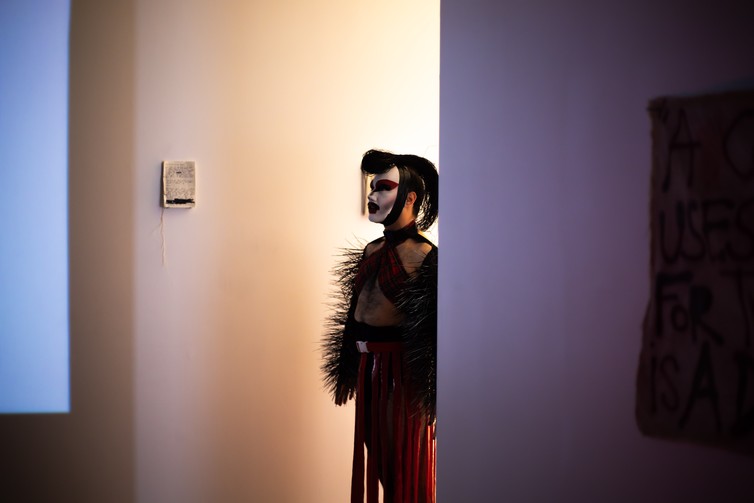
Misty Frequency. Photo by Renati Waaka.
Reparation
Reclamation
Restitution
Restoration
Respirator
Remember
Regardless
Exist
Resist
Persist
Personally
To be
For we
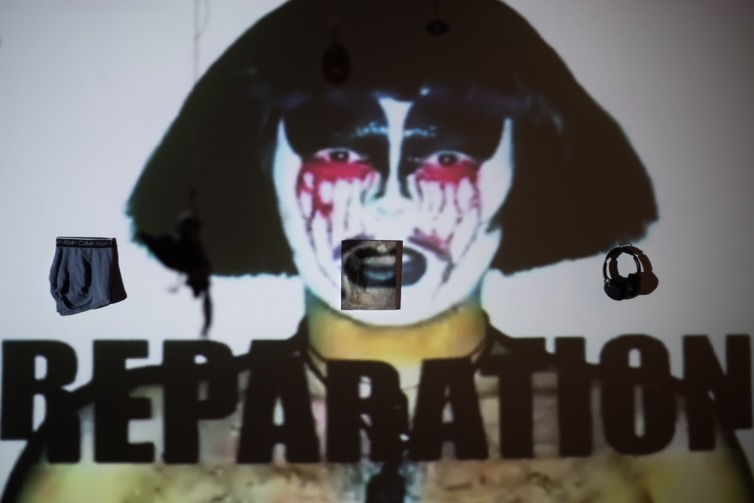
Misty Frequency with Frankie Matchitt-Millar's installation. Photo by Renati Waaka.
To their left is p.Walters’s Césaire at Ihumātao, a banner used first by the artist at the Hīkoi mo te Tiriti in 2024 and more recently by Enjoy’s former Director DJCS, intern Sophie Mephan and I at the National Day of Action for Palestine on 16 August 2025, just a few hours before this performance. The banner bears words written by the Martinican poet and politician Aimé Césaire in his essay ‘Discourse on Colonialism’ (1950): “A civilization that uses its principles for trickery and deceit is a dying civilization.” As DJCS writes, “These words connect struggles across time and place: from the land theft at Ihumātao by Fletchers, to the attempted rewriting of Te Tiriti o Waitangi, to the genocide in Palestine. Using tactics to erode language, art, culture, food, knowledge, each is bound by the same colonial logic of dispossession and erasure.”1
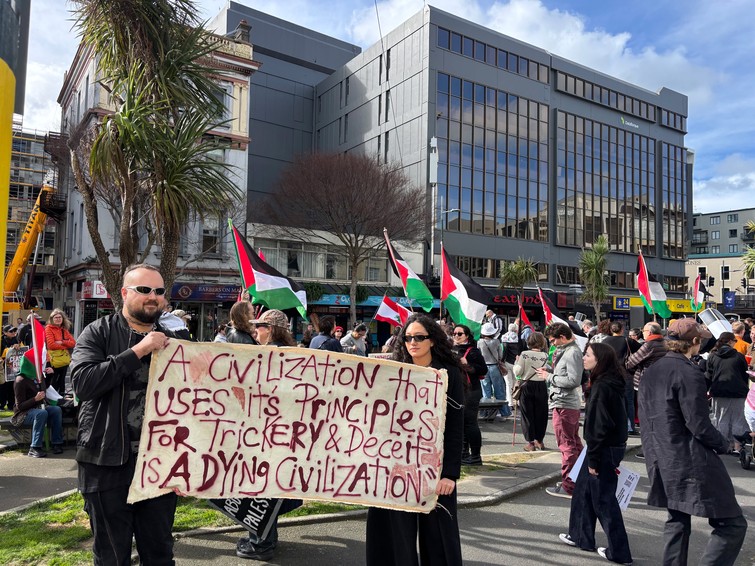
DJCS and Brooke Pou at the National Day of Action for Palestine on 16 August 2025. Photo by Sophie Mephan.
Misty Frequency’s mahi is founded on the struggle for Indigenous rights. As part of this performance, scenes from Misty Frequency’s time at Ihumātao are projected onto the wall that bears Frankie Matchitt-Millar’s artworks. Misty Frequency spent one month at Ihumātao, and credits this experience as the site where their drag persona was born. While Misty Frequency’s drag persona was born from their time at Ihumātao, they were raised in Tāmaki Makaurau, and the artist spent several years there honing their skills and cementing themself as a leading Takatāpui performer, before moving to Te Whanganui-a-Tara. Every kaupapa they have contributed to since is anchored in mana motuhake for Māori, as well as other Indigenous peoples. At Ivy, they participated in Drag 4 Palestine, organised by King Markiss, ultimately helping to raise $4,000 for Medical Aid for Palestinians (MAP). At a time when our government does disgustingly little to help Palestinians in Gaza, every little bit counts. Misty Frequency’s performance at Enjoy acknowledged the overarching oppression in Indigenous peoples’ lives while refusing to cower to it, offering instead a moment of solidarity that extended beyond the space of the gallery.
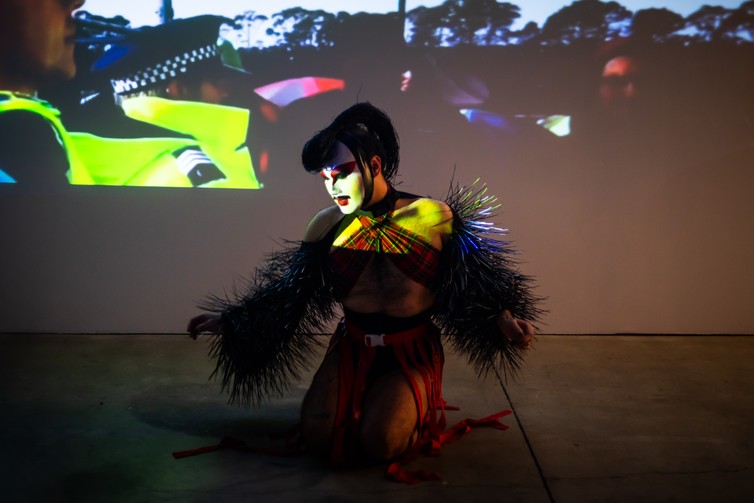
Misty Frequency. Photo by Renati Waaka.
Red lighting sets the scene as we wait for Misty Frequency to continue, the music shifting in time with the artist. Moving with a controlled sense of purpose, they walk towards the centre of the gallery, where Aroha Matchitt-Millar’s installation Tīwaiwaka takamiri turuma, he tangata kaikino is placed. Their pause here feels charged—an exchange of mauri between artists—as Misty Frequency breathes in the pelted and skinned manu suspended in the air. These birds are suspended by muka stripped from harakeke, the same material that Misty Frequency’s headpiece has been constructed from. More rotting harakeke rests inside Matchitt-Millar’s tarp, which Misty Frequency slowly descends to the floor to confront. Rising up, they sway back and forth, reaching out with arms encased in sleeves made from mesh and black zip ties with tips spray painted white. The effect is truly bird-like, and not just like any bird, but our beloved huia. There is tension here, and within the exhibition as a whole, that draws on our impact on te taiao. Harakeke is an incredible natural resource; most weavers I know work it on a plastic tarp to contain the para. Fetishini’s red room, filled with fluid meant to represent blood, is encased with Glad Wrap. In their performance with Ys Blue, Chloe Jaques and Kat Lang, the artist addressed our contemporary ecological collapse through the metaphor of a body’s anatomical demise.
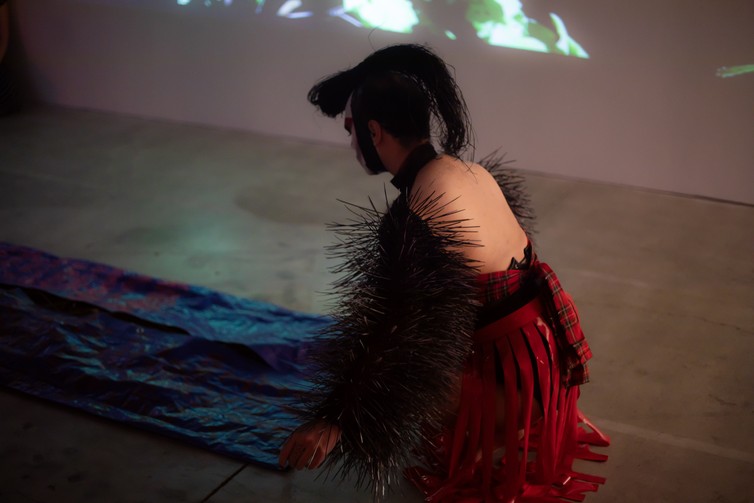
Misty Frequency. Photo by Renati Waaka.
Our own bodies have been corrupted by the microplastics in our food, our waterways, our air. The performance that opened this exhibition (The Ethics of Witnessing [ROT]) did not hide the fact that we are the problem; the performance that closes it reminds us that we could be the solution. Exist. Resist. Persist.
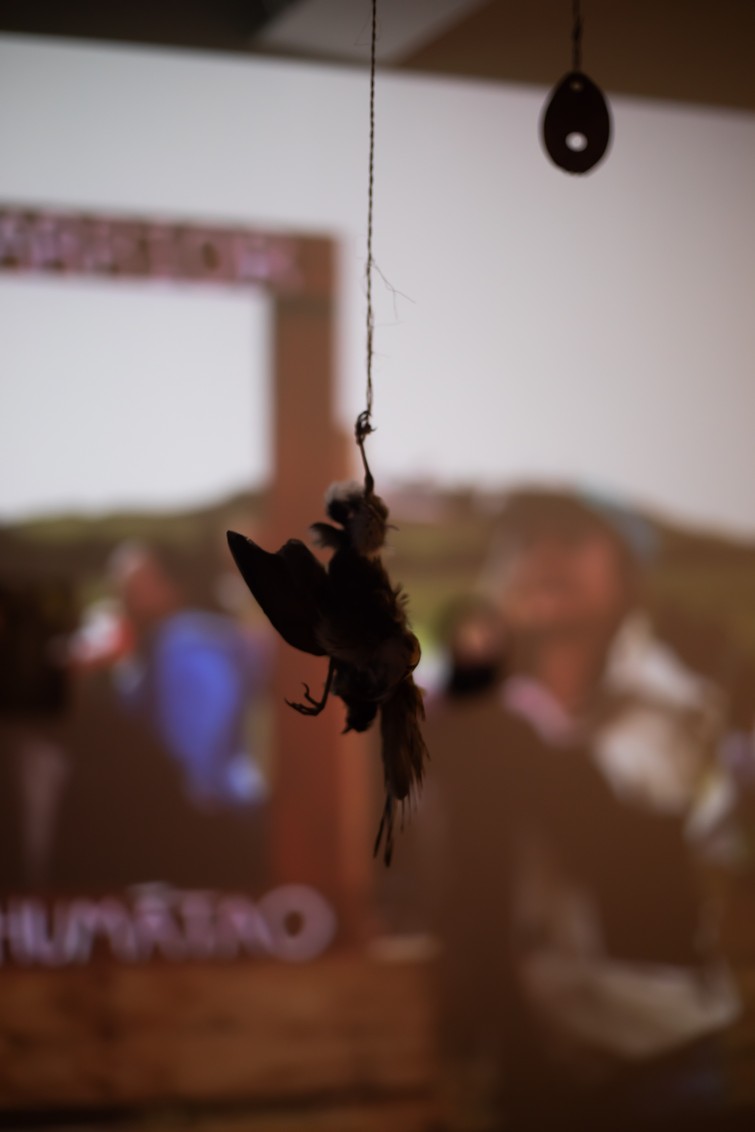
Misty Frequency with Aroha Matchitt-Millar's Tīwaiwaka takamiri turuma, he tangata kaikino. Photo by Renati Waaka.
-
1.
DJCS via @enjoycontemporary, Instagram post, 16 August 2025.
